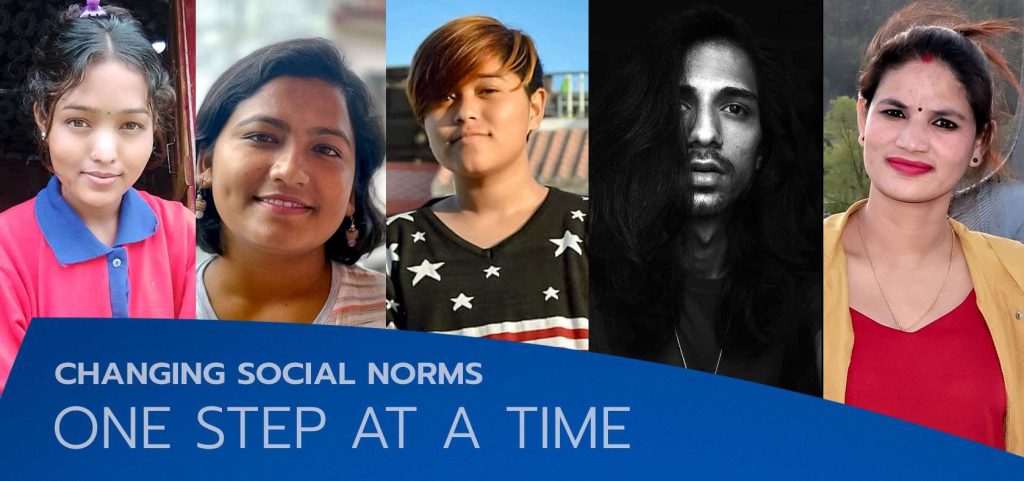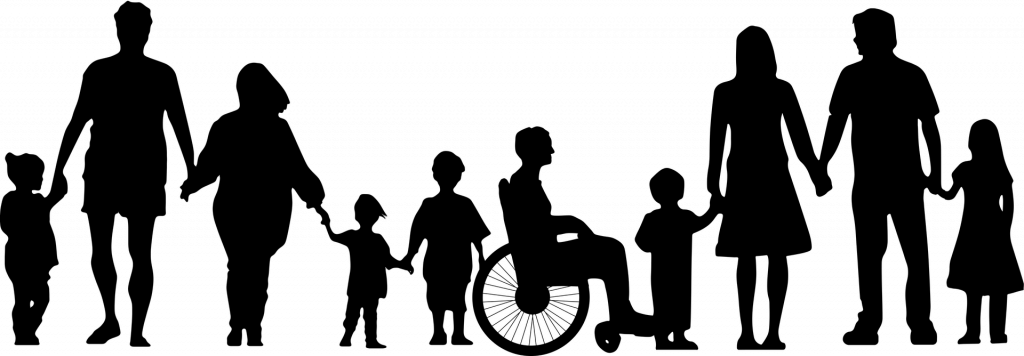Reducing social isolation and enhancing wellbeing through social inclusion involves creating social isolation strategies, policies, and initiatives. These actions need to promote equitable access to opportunities and resources for all individuals and communities. This needs to be the case regardless of their background or circumstances.

Contextual social norms influence the development of social inclusion and well-being policies, including those based on age. Policies based on age are necessary because certain age groups have unique needs that require tailored support. According to the World Health Organization (WHO), in many countries, older adults are much more likely to experience loneliness and isolation. Therefore, because older adults are more prone to social isolation, policies that aim to combat social isolation often prioritise elderly people.
Age Based social Isolation Strategies
Social inclusion and well-being policies are sometimes developed to address the needs of people of a certain age, among other factors (Howe, 2013). However, it is important to recognise that age-based policies can also perpetuate stereotypes (Donizzetti, 2019). They can also create social exclusion. Wrongly assuming that all older adults are lonely and in need of social support can overlook the diversity of experiences within that population. This can unwittingly reinforce negative stereotypes about ageing (Reissmann et al., 2021).
Rather than solely focusing on age, it may be more effective to develop policies that address the specific needs and experiences of individuals and communities, regardless of their age. This approach can promote more inclusive and equitable policies that foster interpersonal relationships and enhance the well-being of everyone. By addressing the root causes of social exclusion and focusing on individual and community needs, we can create policies that promote social inclusion and well-being for everyone.
Social Isolation Strategies and Creating Social Inclusion
Social inclusion refers to the process of ensuring that all individuals and communities are able to fully participate in and benefit from society. It involves promoting equal opportunities for people of all backgrounds, without excluding anyone based on race, ethnicity, gender, sexual orientation, socioeconomic status, or other factors (United Nations Department of Economic and Social Affairs, 2016).

Social inclusion aims to reduce social exclusion, which occurs when individuals or groups are marginalised or excluded from society due to various factors. This exclusion leads to and compounds the impacts of poverty, unemployment, and social isolation.
Social inclusion efforts can involve a range of activities, such as improving access to education, healthcare, housing, and employment opportunities. It can also involve promoting diversity and cultural awareness. As well as creating supportive social networks and communities (Lloyd et al., 2006).
Reducing social isolation
Reducing social isolation through social isolation strategies and loneliness strategies involves addressing the factors that contribute to feelings of loneliness and disconnection from others. To do this effectively we must understand each person’s unique needs, and unique abilities and desires to contribute to a connected social network of like-minded people.
Social isolation can have negative impacts on physical and mental health and can contribute to other social issues such as poverty, crime, and social exclusion. Creating opportunities for individuals to connect with others can help to reduce social isolation. This can involve activities such as community events, support groups, volunteering, and other social activities.

Technology can be an effective tool for reducing social isolation, particularly for individuals who are physically isolated or have mobility limitations (Balki et al., 2022). Providing access to technology such as smartphones, tablets, or computers can help individuals stay connected to others through social media, email, or video calls, although, it can also increase social isolation due to reduced in-person relationships. Therefore, applying technology to social isolation strategies should be researched further.
Depression and Anxiety
Mental health issues such as depression and anxiety can contribute to feelings and realities of social isolation (Brown, 2021). Addressing these issues through therapy, counselling, or other forms of treatment can help individuals feel more connected to others and reduce feelings of loneliness. Lack of access to resources such as transportation, healthcare, and social services can contribute to social isolation and loneliness (Lamanna et al., 2020). Therefore, improving access to these resources can help individuals feel more connected to their communities and reduce social isolation.
Reducing social isolation requires a multi-faceted approach that addresses a range of factors, including social, economic, and health-related issues. By fostering social connections and addressing the root causes of social isolation. Individuals and communities can work together to promote social inclusion and well-being for all.
Enhancing well-being
Enhancing well-being involves improving physical, mental, and emotional health in order to promote a sense of overall happiness and fulfilment. Regular exercise can improve physical health, reduce stress and anxiety, and boost the mood. Engaging in physical activity such as yoga, running, or walking can help to enhance overall well-being. Building and maintaining social connections can enhance well-being (Seppala, 2014). Participating in social activities, volunteering, and connecting with friends and family can all contribute to a sense of connection and belonging. Pursuing activities and hobbies that bring joy and fulfilment can enhance overall well-being.
Enhancing well-being involves addressing a range of factors that contribute to physical, mental, and emotional health. By incorporating healthy habits and pursuing activities that bring joy and fulfilment, individuals can work to enhance their overall well-being.

Solutions
Here are some ways that efforts to create social inclusion can help to reduce social isolation and enhance well-being:
- Fostering interpersonal relationships: Creating opportunities for individuals to connect with others can help to reduce social isolation and promote well-being. This can involve initiatives such as community events, support groups, mentoring programs, and other social activities that bring individuals together and promote a sense of belonging.
- Addressing social and economic inequality: Poverty, unemployment, and other social and economic factors can contribute to social isolation and reduced well-being. Addressing these issues through policies such as affordable housing, job training, and access to healthcare can help to reduce social exclusion and promote well-being for all individuals (Jaspal & Breakwell, 2020).
- Encouraging community engagement: Encouraging individuals to get involved in their local communities can help to reduce social isolation and promote well-being. This can involve initiatives such as volunteering, joining clubs or organisations, or participating in community events (Harris et al., 2022).
- Improving access to resources: Lack of access to resources such as transportation, healthcare, social services, and green spaces can contribute to social isolation and reduced well-being. Improving access to these resources through policies and initiatives can help individuals feel more connected to their communities.
- Promoting diversity and cultural awareness: Recognising and celebrating diversity can help to promote social inclusion and enhance wellbeing. Promoting cultural awareness and understanding can help individuals feel more connected to their communities and promote a sense of belonging.
Overall, social inclusion policies can help to reduce social isolation and enhance the well-being of individuals and communities. By promoting equal access to opportunities and resources, social inclusion policies can work to create a more equitable and inclusive society.
Human Dignity
Every individual experiences social isolation and states of wellbeing, happiness, enjoyment and connectedness in different ways. This is because each individual has unique needs and interests. When creating strategies, policies and initiatives to reduce and alleviate social isolation, the last thing stakeholders should be looking to do is mandate the form in which connections between people should take place. The temptation to look at outcomes created by such strategies and say “we have reduced social isolation by this amount”, should never come at the cost of genuinely understanding whether people are sincerely experiencing wellbeing in a way that actually serves their unique needs and interests.
Ultimately, the goal that strategies aiming to reduce social isolation should always have as their barometer of effectiveness is whether they are facilitating the conditions for people to connect with each other as they really are naturally with their unique personalities, interests, politics and aversions, instead of creating and mandating social conditions that sacrifice the dignities of vulnerable people, including their capacity to choose freely which others they want to connect to based on personal preferences and feelings. These personal preferences and feelings do not need to be justified, recorded, analysed, studied or otherwise quantified for the sake of reducing social isolation, which itself is a goal made completely and totally arbitrary by ignoring the real preferences, perspectives and needs of vulnerable people.
The Goal Must Be Real
Nothing is more humiliating than being told you must come out of a state of social isolation for the sake of your own health, and being provided with resources to connect with others, only to then have the form that that state of ‘connectedness’ with others takes completely dictated by a strategy that fundamentally ignores an individual’s right to choose who they want to connect with and how, and for what purpose.
Connecting with others for the “purpose” of reducing social isolation seems very much like a goal a real human would find impossible to relate to and then employ, given that human relations have altogether a different set of motives and produce a different range of affects and feelings that, admittedly, do end up reducing social isolation, but only as a by-product of genuine connection that is done from a space of respect for the individual’s unique preferences, needs, personality, thoughts, beliefs, aversions and desires.
Conclusion
In conclusion, social inclusion policies play an important role in social isolation strategies and enhancing well-being. We should prioritise equity and create opportunities for individuals and communities to connect with each other and access resources. Social inclusion policies can promote a sense of belonging and enhance overall quality of life.
While age-based policies may be appropriate in some cases, it is important to recognize the diversity of experiences and needs within different age groups and to focus on addressing individual and community needs. Ultimately, by working to reduce social exclusion and foster interpersonal relationships, we can use social inclusion policies to create a more equitable and inclusive society for all.
The THRIVE Framework examines issues and evaluates potential solutions in relation to the overarching goal of thrivability. It is about making predictive analyses using modern technology that supports environmental and social sustainability transformations. Employing the principles of intervention strategies, including realising related social concepts such as social inclusion, itself a fundamental part of THRIVE Framework – is critical to achieving sustainable societal transformation.
To learn more about how The THRIVE Project is researching, educating, and advocating for a future beyond sustainability, visit our website. You can follow our informative blog and podcast series, as well as find out about our regular live webinars featuring expert guests in the field. Sign up to our newsletter for regular updates.























